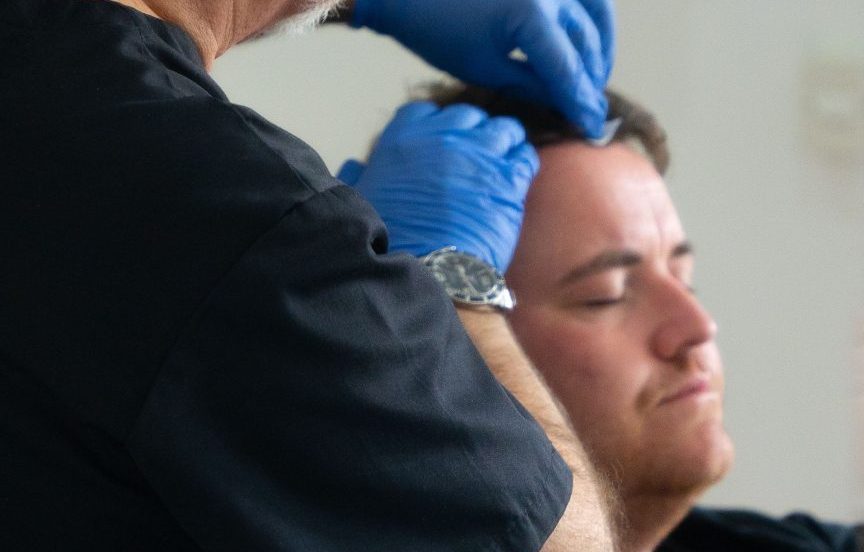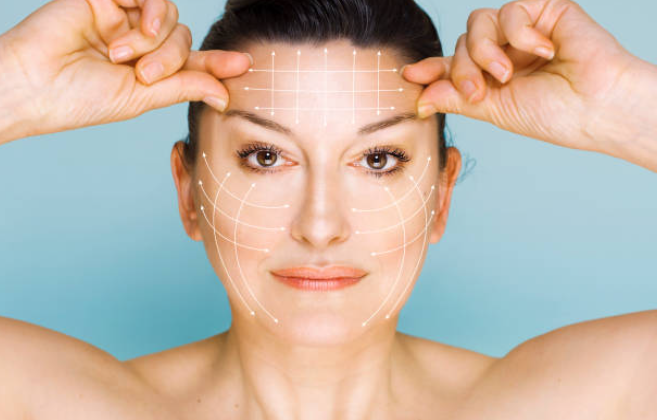
Non-Surgical Thread Lift: What The Procedure Entails
What The Procedure Entails
Non-Surgical Thread Lift
Discover the non-surgical thread lift procedure: minimally invasive, quick recovery, and youthful results.
Non-Surgical Thread Lift
What The Procedure Entails
Facial threading sometimes called a thread lift, is a helpful and reasonably priced operation, provided your expectations are managed effectively. Although a thread lift cannot replace a surgical facelift, doctors say it can benefit the correct patient. This usually entails a few cosmetic operations that, among other things, increase the creation of new collagen and elastin, lift the skin, exfoliate or remove damaged surface skin, and smooth out fine lines and wrinkles. Skin issues like sun damage, loose skin, scars from acne, and more can be addressed. It enables you to obtain modest anti-aging advantages without undergoing intrusive procedures like a surgical facelift, which comes with incisions, anesthesia, and scarring. This article explores the non-surgical definition, procedure, cost, recovery, aftercare, etc. Let’s dive into the details.
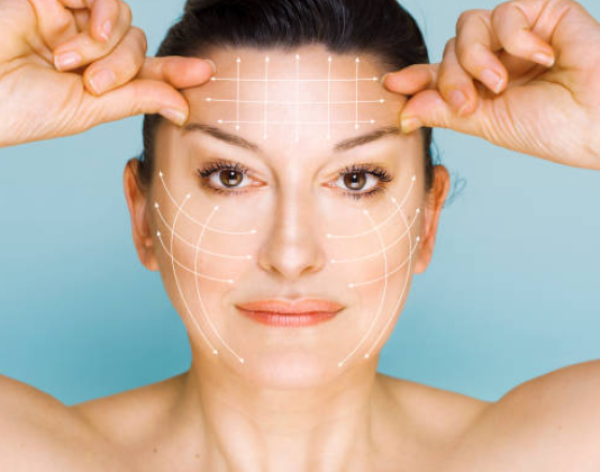

Non-Surgical Thread Lift
What is a Non-Surgical Thread Lift?
With a nonsurgical thread lift, you can rejuvenate the appearance of your face or neck by lifting drooping, aging skin and stimulating the creation of collagen. Therefore, a thread lift is an in-office, minimally invasive surgery. In the procedure, plastic surgeons insert a medical-grade thread beneath the skin to pull the skin into place. These threads trigger the body’s natural healing reaction, which increases collagen. The threads are available in a variety of materials and lengths.
A thread lift is a nonsurgical surgery that produces minor alterations instead of a facelift.Due to how quickly and with little downtime the process takes, it is frequently called a “lunchtime facelift.” A further advantage of thread lifts is that the skin in the affected area creates collagen, which adds volume as the threads fall out and the tissue heals. A thread lift usually has combined effects that persist for a year or two.
Within the range of rejuvenation alternatives, thread lifts fall between non-surgical fillers that last only a few months and facelifts, which involve all the risks, expenses, and longer-lasting advantages associated with surgery.
Alt text: How thread lift works
How Does a Non-Surgical Thread Lift Work?
There are two ways that the non-surgical thread lift process operates. The first one is quite simple. Your physician can tighten the skin around your forehead, neck, or torso by threading tiny, dissolveable sutures underneath your skin. Painless, invisible “barbs” cling to your skin, ensuring the thread grasps your muscles and underlying tissue as it is drawn taut. Your body begins to mend as soon as a barbed thread is implanted. The body recognises a suture material and increases the creation of collagen in the damaged area, even though the threads beneath your skin are not hurting you. Collagen can fill in wrinkles and give your face a more youthful suppleness. The second function of the threads is to activate your body’s natural healing process. Wherever there are threads, your body will treat them as an injury and produce extra collagen in that area. Your skin appears fuller and plumper because of a protein called collagen. Ageing causes you to lose it, which causes
sagging skin and wrinkles.
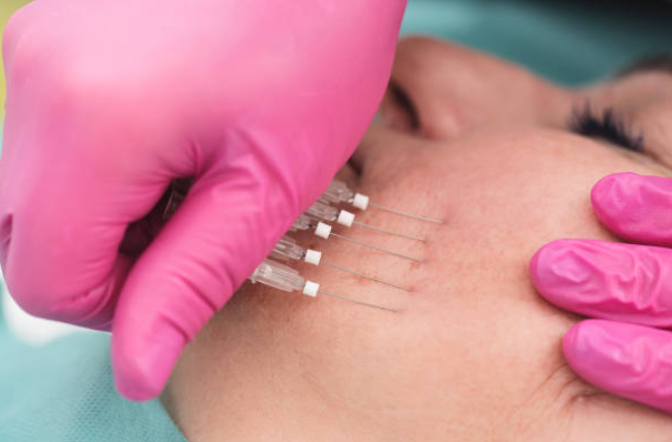
What is a PDO thread lift?
Surgeons performing a thread lift might choose from several types of suture materials. They may employ polydioxanone (PDO) thread as one kind of material. It’s an absorbable compound used to make sutures. Also, it’s a common suture used by surgeons for other surgeries like breast lifts and stomach tucks. However, the PDO threads used for facial threading feature cones or barbs on the ends to aid tissue clinging. Poly L-lactic acid (PLA) and polycaprolactone (PCA) are two other thread kinds that you may encounter. Certain threads are made of a different material, such as barbs or cones, to help them stick to the skin, while others are thinner or thicker. Collagen is created as they dissolve; they cause a controlled inflammatory reaction slightly different from one another because each one is composed of slightly different elements. There’s no clear winner, and the distinction (between thread types) is not so important for consumers. A surgeon’s choice of thread for a procedure often depends on their preference and experience.
Types of Available Thread Lift Procedures
The "cat" or "fox" eye thread lift
makes your eyes appear more cat-like by raising your eyebrows towards your temples.
Eyebrow thread lift
Your skin is tightened, and a plastic surgeon raises sagging or furrowed eyebrows.
Thread lift for the nose
A plastic surgeon uses injections to raise, straighten, or thin your nose. They might occasionally pair dermal fillers with a nose thread lift.
Neck thread lift
This operation smoothes out neck wrinkles and raises loose skin.
Non-Surgical Thread Lift Procedure Step-by-Step
- Numbing and preparation
To guarantee your comfort throughout the process, your specialist will clean the procedure area and apply a numbing lotion or local anesthetic. - Insertion of threads and lifting process
The threads will be carefully inserted into the desired skin locations using a cannula or specialized needle.
The professional will then carefully elevate and realign the skin to achieve the intended effects. - Duration of the Procedure
The procedure’s length may change depending on the treated area and its complexity.
Sessions for thread lifting usually last anywhere from thirty minutes to several hours. - Pain Control and Comfort Techniques
Throughout the process, your physician will check your pain threshold and administer extra anesthetic or numbing to ensure your comfort. - Quick Outcomes and Possible Adverse Effects
Improvements in the elevated areas can be seen right away following the surgery.
However, it’s normal to have some redness, swelling, or bruising; these will subside in a few days.
Alt text: Right Candide for non-surgical thread lift
Who is The Right Candidate For Non-Surgical Thread Lift?
A thread lift is typically most beneficial for those who:
- If a candidate is showing indications of early ageing.
- Aged between thirty to fifty years old.
- Expect nothing spectacular to happen.
- Not interested in having aesthetic surgery.
- Had a neck lift or rhytidectomy (facelift), and would like to review their outcomes.
A thread lift is also an excellent alternative for those with specific medical issues who cannot have a typical facelift due to its low risk. For instance, a thread lift is still possible in the event of high blood pressure, diabetes, or heart disease.
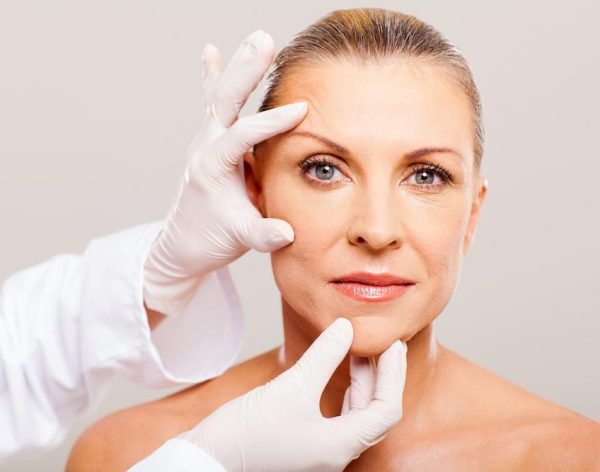
A thread lift is also an excellent alternative for those with specific medical issues who cannot have a typical facelift due to its low risk. For instance, a thread lift is still possible in the event of high blood pressure, diabetes, or heart disease.
Benefits
Benefits of a Non-Surgical Thread Lift
Advantages of a thread rise:
- Most adults can have it done because it’s a low-risk operation.
- The suppleness of the skin is naturally improved by the threads’ stimulation of collagen formation.
- You can immediately resume your activities because your recovery is rapid.
- The plastic surgeon might remove the threads if the outcome doesn’t meet your expectations.
Are There Thread Lift Alternatives?
You have a few more excellent options if you’re searching for alternatives to face rejuvenation.
Surgical procedures
Facial Fat Transfer: Similar to dermal fillers, placing fat in the cheeks and temples might occasionally help softly realign drooping skin in the lower face. Outcomes can endure for several years.
Nonsurgical procedures
What Are The Potential Risks and Side Effects
Although there are potential adverse effects and possible problems, a thread lift is considered a low-risk surgery with a short recovery period. Following a thread lift, the following are frequently encountered:
- One might experience bleeding.
- Some experience pain at the threading point.
- Swelling.
- Bruising.
Complications, such as dimpling, are 15–20 percent likely.
- Minor issues could arise, which are readily fixed.
- Some of the common complications include:
- Allergy to substances present in the threading material.
- Blood resulting from the process accumulates beneath your skin.
- Discernible tugging or dimpling where the threads have been placed.
- Migration or inadvertent “movement” of the threads causes the skin to seem swollen or protrude.
- Discomfort beneath your skin due to an improperly positioned or excessively “tight” thread.
- Infection in the procedure area.
Call your doctor if you notice any of the following:
- Green, black, brown, or red discharge at the site of your procedure.
- Swelling for more than 48 hours.
- Persistent headaches.
- Fever.
If you have any concerns about potential consequences, it is best to consult the surgeon who performed the treatment. Some people discover that their faces do not look how they had anticipated after therapy.
Always find a certified, skilled surgeon to do the procedure, and discuss any concerns you may have with your surgeon before undergoing this treatment.

What is the estimated cost of the non-surgical thread lift?
The Cost of Non-surgical Thread Lift
The thread lift cost will vary significantly depending on your location, your practitioner’s skill level, and the locations you plan to treat. Depending on the treated area, a non-surgical thread lift can cost $1500 to $3000. Your eyebrows, jowls, under-eye area, and forehead are all facial features that may benefit from a thread lift.
Targeting one location at a time or multiple areas simultaneously will increase the cost, such as the cost of a thread lift, which is used to tighten and draw up the breasts. Thread lifts don’t require general anaesthesia so that you can save money on sedation. You are also not required to consider taking time off from work for recovery. Recalling takes a little time so you may do it over your lunch break.
Most patients require one or two initial treatments spaced one month apart, followed by annual maintenance treatments. To improve the thread lift’s outcomes, your plastic surgeon might advise you to receive additional treatments or aesthetic procedures like Botox or Juvederm. Make sure you understand any charges related to these processes. During your free consultation, you will receive a precise quote. It is important to note that although most clinics accept third-party payment solutions, cosmetic treatments like this are not covered by insurance.
Results: How Soon Do You Expect
Immediately following your operation, your skin will appear firmer and more lifted; nevertheless, the first alteration results from transient swelling. About a month will pass before the results become more noticeable, and within three months, they will peak. This gradual improvement continues, enhancing skin texture and elasticity. Most people resume their regular activities within a few days of the initial healing phase, which is often short. Mild swelling or bruising may occur but generally subsides quickly. As collagen regeneration peaks, optimal results are usually seen around three months post-procedure.These results can last 18 months, making thread lifts popular for those seeking subtle, non-surgical facial rejuvenation. Now let’s focus on how to choose a good doctor for the procedure.


How to Choose The Right Practioner
Selecting the right practitioner for your non-surgical thread lift is key to achieving excellent results and ensuring safety.
A qualified and experienced practitioner possesses the technical skills required and a deep understanding of facial anatomy.
Their expertise helps place the threads accurately, thus achieving a natural-looking result while minimising the risk of complications.
Board certification and specialized training in aesthetic procedures are key indicators of a practitioner’s qualifications.
During your consultation, asking several questions to gauge the practitioner’s expertise and approach is important.
Inquire about their experience with thread lifts, including the number of procedures they have performed.
Request to view before and after pictures of their prior clients and discuss potential risks and the expected outcomes of the procedure.
Be wary of red flags such as a lack of transparency, unwillingness to answer questions, or pressure to undergo additional treatments.
A reputable practitioner will provide clear, honest information and prioritize your health and satisfaction.
FAQs About Non-Surgical Thread Lift
How to Choose The Right Practioner
These are some of the commonly asked questions.
- Is The Procedure Painful?
Local anesthesia minimizes discomfort during the procedure. Patients may feel mild pressure or pulling, but it is generally well-tolerated. - Can a Thread Lift Be Combined With Other Treatments?
A thread lift can be combined with other nonsurgical treatments such as dermal fillers, Botox, and skin resurfacing procedures for enhanced results. - How Should I Prepare For a Thread Lift?
Avoid alcohol, smoking, and blood thinners kind of medication a few days before the procedure.Your practitioner will provide specific pre-procedure instructions. - How Do I Care For My Skin After a Thread Lift?
Post-procedure care includes avoiding strenuous activities, sleeping on your back, and following any specific aftercare instructions given by your practitioner to ensure optimal results and minimize the risk of complications.
What Are The Potential Risks and Side Effects
Merchant City Medical Group is the premier destination for nonsurgical thread lifts in the UK and Europe.
It is renowned for its expertise and cutting-edge techniques.
Our skilled practitioners use the latest advancements in thread lift technology to deliver natural-looking, rejuvenated results, ensuring a youthful appearance without the need for invasive surgery.
Our procedure timeline looks like this in the diagram below.
TREATS
Ageing, sagging, loose skin

ANAESTHESIA
Topical and local anaesthetic

DURATION
45-60 minutes.

HOSPITAL STAY
No

RECOVERY
2-3 days.
The Take Away Point
We are committed to our patient’s safety and satisfaction and provide personalized care tailored to each individual’s unique needs and aesthetic goals. Located in the heart of the UK, Merchant City Medical Group combines state-of-the-art facilities with a welcoming and professional environment Our motto, “Be good, look good reflects our dedication to helping patients feel their best inside and out. Trust us to enhance your natural look with minimal downtime and long-lasting results. Choose Merchant City Medical Group for a transformative experience in nonsurgical thread lifts.
Contact us today or book your free consultation with us.


